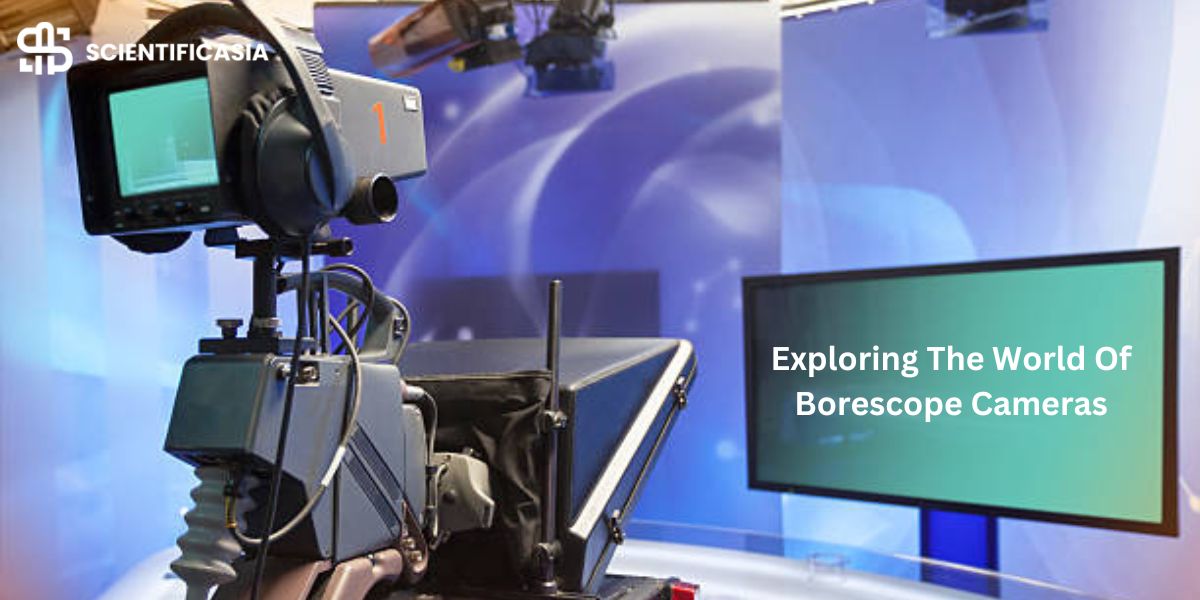Among the host of images in modern technology, borescope cameras mark a landmark in innovation in the visual inspection arena. Borescope cameras are very crucial in areas that are beyond the reach of the naked eye, like the apparatus of the manufacturing machine or the pipeline maze. Presented further is the text to bring forth the benefits realized by the users of Video Borescope in real-time inspection within the borders of difficult environments. This advanced, wide-ranging book will teach you all about borescope cameras: how they work internally, their applications, the latest developments, best practices, and much more.
Understanding Borescope Cameras
A borescope camera, in the most basic sense, is a thin device, either flexible or rigid, and equipped with a miniature camera at one end and light at an extreme end. Compact in design, it can be passed through small spaces, including pipes, engines, and turbines, among other complicated machinery, to provide real-time visual feedback to the operator. They are versatile in application and very useful in quite a number of modalities that are designed to serve specified needs related to any inspection.
Applications Across Industries
It is due to this adaptability that they are made highly valuable in these fields. Some of the fields in which they are useful include plumbing, energy, aviation, automotive, manufacturing and energy.
· Aviation:
Borescope cameras are used in aviation to inspect engines, turbines, and critical parts of an aircraft. This permits the engineers to detect defects, corrosion, or foreign object debris in a non-destructive manner and without disassembling, bringing down the downtime and maintenance costs.
· Automotive:
Automotive technicians take advantage of borescope cameras to inspect engines, exhaust systems, and many unknown areas inside vehicles that would normally be hidden from general view. This helps in the early detection of problems, be it a leak or just plain wear on a part, so that the technician can make pinpoint repairs for better vehicle performance and safety.
· Manufacturing:
Borescope cameras are helpful in verifying welds and casting defects; they also offer monitoring for production equipment to keep quality tight and avoid expensive downtime.
· Energy:
Borescope cameras find wide application in the energy sector, especially during the further wellbore inspections, pipelines, and drilling equipment, in the process of oil and gas exploration. The environmental risk and expensive remediation may be reduced when operators evaluate whether the state of these assets suggests problems, such as corrosion, leaks, or structural issues.
· Plumbing:
Plumbers use borescope cameras for the most part to diagnose problems in plumbing systems, such as a clog, leak, or damage in the pipes. Through this system, customers can locate and describe to the letter what the exact problem is with a pipe or a drain. It permits an easy and low-cost repair with minimal inconveniences.
Technological Advancements
Over the years, advancements in optics, imaging sensors, and connectivity have driven a significant evolution in borescope camera technology. Some of the notable advancements in this space include:
· High-Definition Imaging:
Modern borescope cameras are attached with high-resolution cameras that can capture images and videos in very clear and detailed formats in almost all types of environments.
· Wireless Connectivity:
It thus easily integrates the device with mobile devices like smartphones and tablets to view, record, and share inspection information remotely.
· Artificial Intelligence (AI):
Borescope cameras, equipped with AI technology, can perform real-time image analysis to determine any anomaly, such as cracks or corrosion, and immediately notify the operator.
· Enhanced Durability:
Ruggedized borescope cameras are designed to withstand extreme heat and humidity, in addition to corrosion, for reliable performance in tough environments.
Best Practices For Borescope Inspection
Even though borescope cameras offer unparalleled access and visibility, their proper use is important enough to get precise results and keep the equipment durable. Here are some best practices for borescope inspection:
1. Pre-Inspection Preparation:
Ensure the borescope camera and its related accessories are clean prior to inspection. Ensure the battery is charged or the power source is valid to allow for non-stop inspection.
2. Optimal Lighting:
The proper illumination supports such clear vision of the imaging, even if the environment is dark or poorly lit. Place the borescope camera in a position where the lighting source works to the maximum; adjust the brightness to a level where the visibility is optimal.
3. Maintained Manipulation:
It would be good if you maintained a steady hand while moving the borescope camera into tight spaces. So you did not make sudden efforts in any direction or into something. Slow and steady movements will pay off and prevent possible damage to the equipment.
4. Systematic Inspection:
Perform full, methodical examinations of borescope cameras, by moving the head through the entire length of the area under observation. Reporting of any anomalies detected requires focusing on areas of interest, such as joints, seams, or critical parts.
5. Data Management:
Record inspection findings in the form of images or videos in order to document and enable further analysis or reporting. Record inspection data systematically, including timestamps and notes, for future reference. 6. Post-Ins
6. Post-Inspection Analysis:
Since you conducted an inspection, you shall, therefore, critically look at all the taken photos and videos. You should point out possible anomalies or any such places that you might need to dig deeper into. Consult colleagues or subject matter experts as necessary to gain insight into the results.
Adherence to these best practices ensures that operators deliver repeatable results during maintenance, troubleshooting, and quality assurance, thereby increasing the effectiveness of each borescope examination.
Conclusion
Borescope cameras are flipping the game of visual inspection. They allow access to inaccessible locations and give a unique view of the health of crucial assets. It is a very versatile and indispensable gadget in everything from manufacturing to servicing airplanes. This assures efficiency, dependability, and safety in the industries it serves. It is safe to advance the statement that, with technology growing at an exponential rate daily and continuous improvement of design and functionality; one can now be sure that borescope cameras are the gadget without which no inspection professional would survive in the world.
















